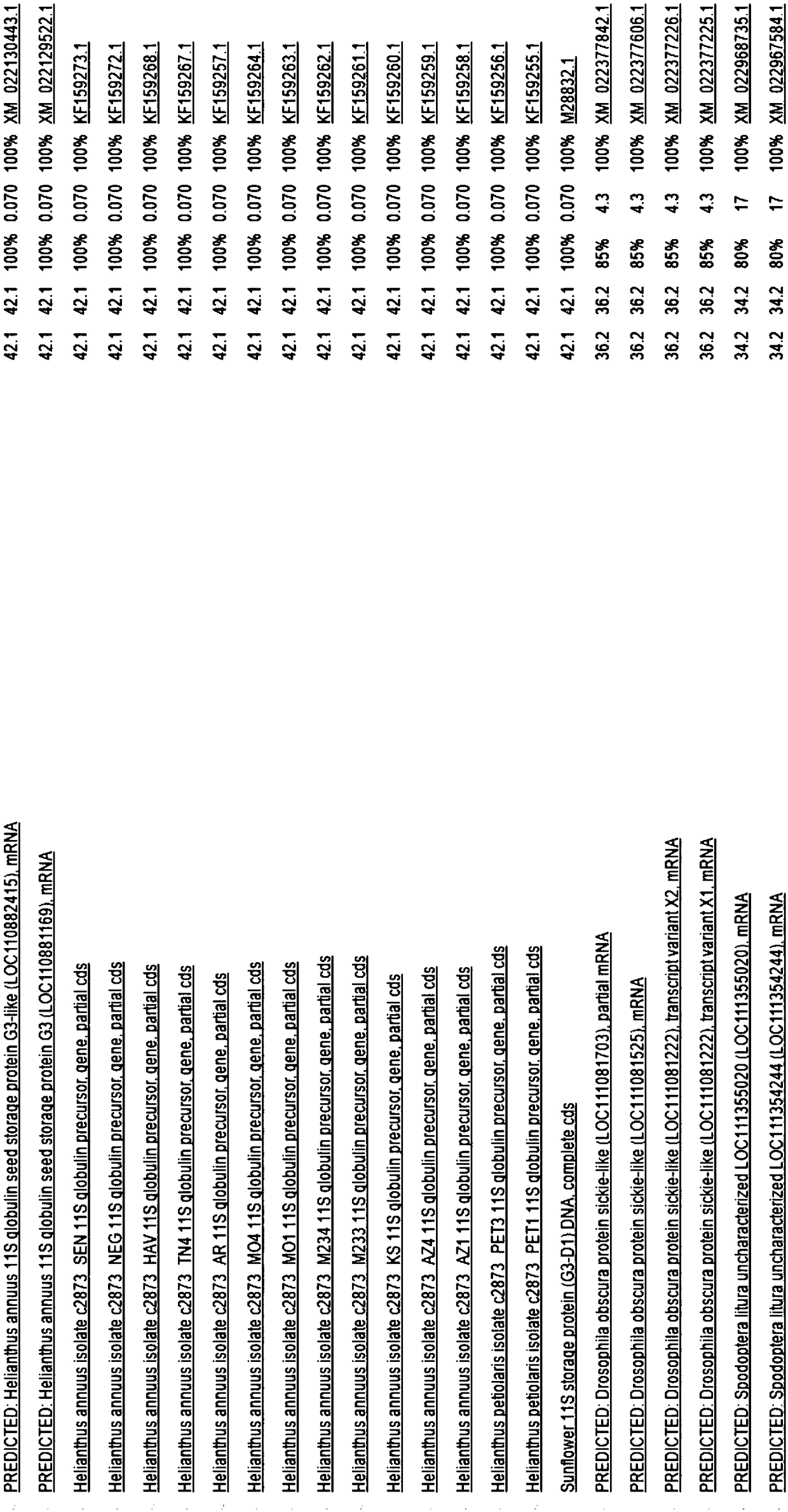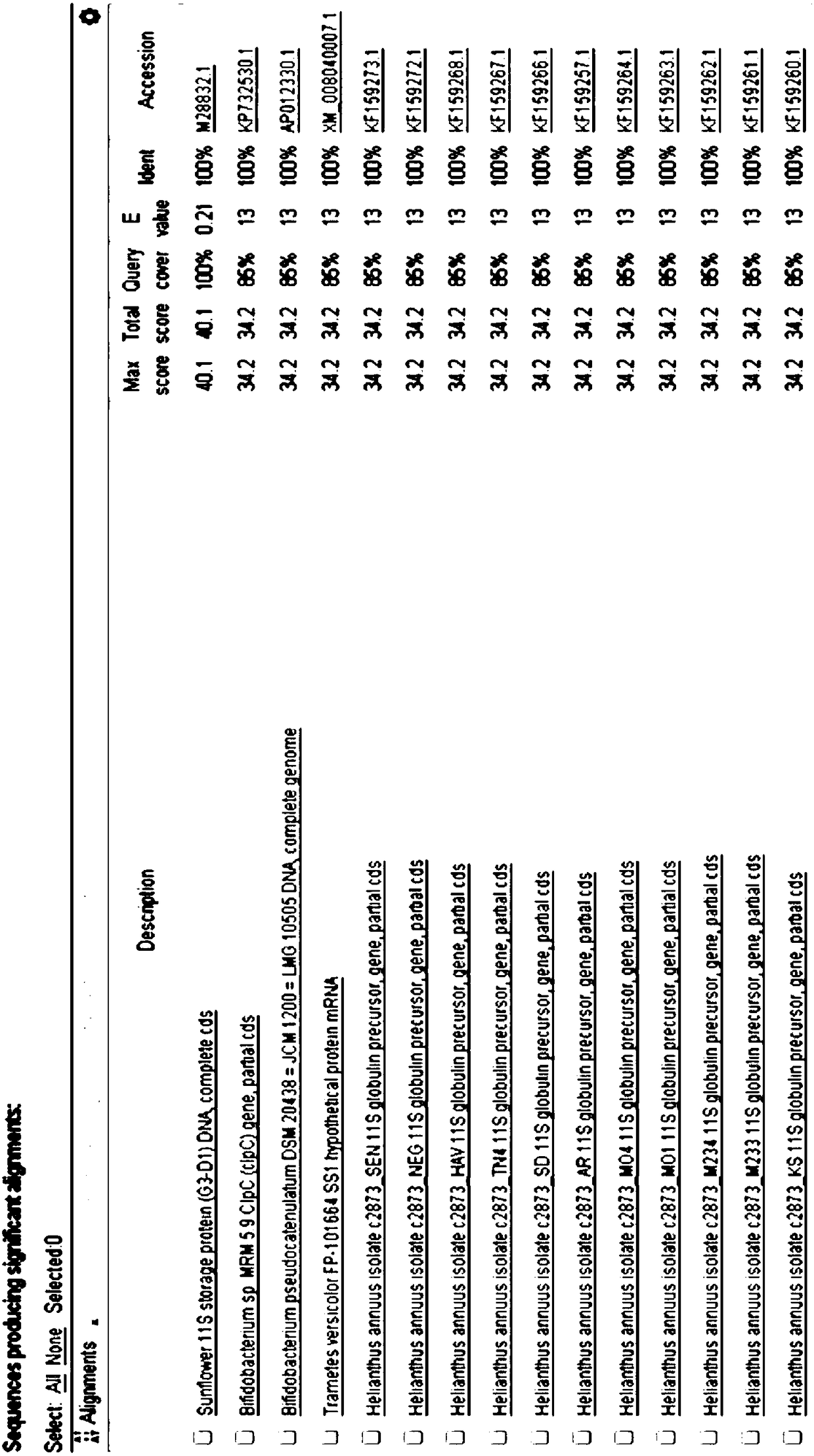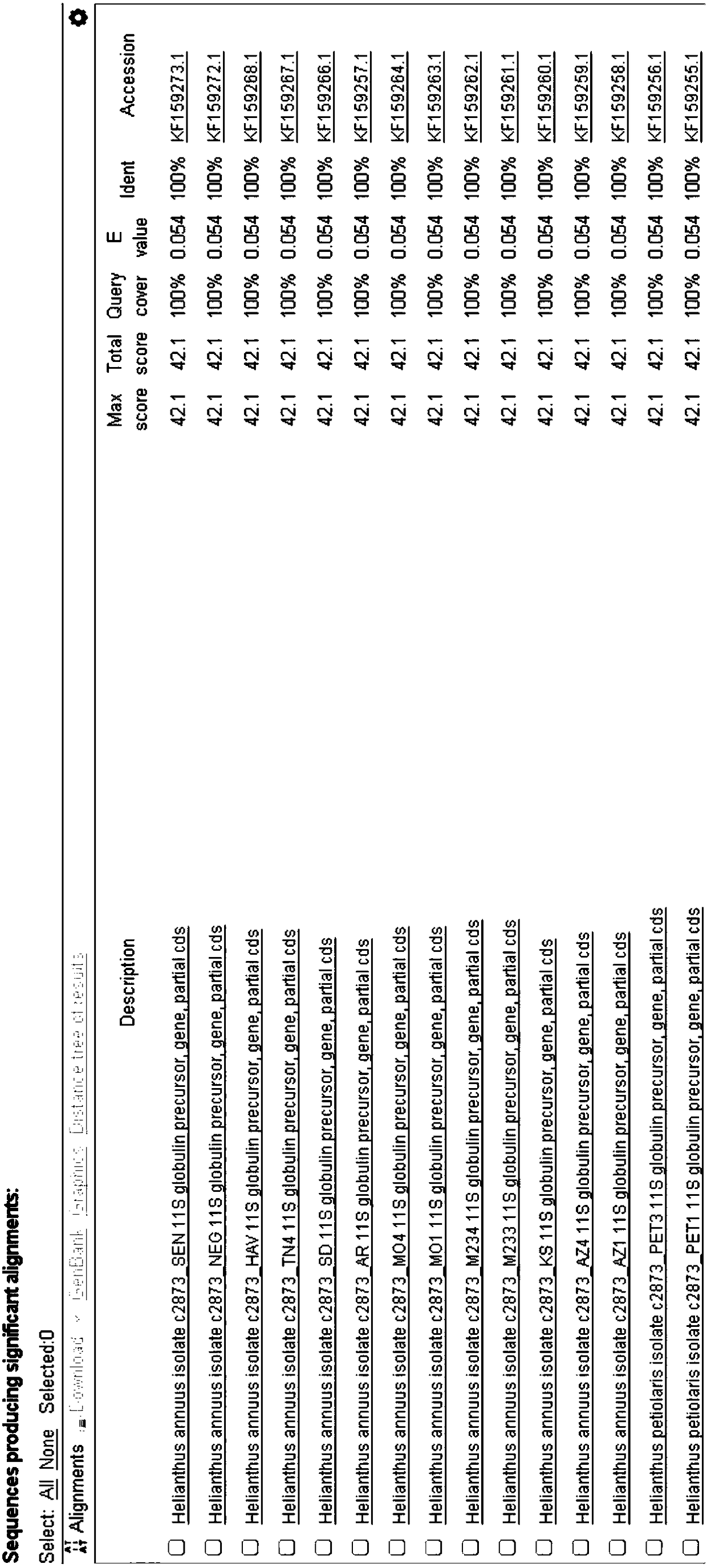Specific primer and probe as well as real-time fluorescence quantification PCR kit used for detecting DNA of sunflower
A real-time fluorescent quantitative and specific technology, applied in DNA/RNA fragments, recombinant DNA technology, biochemical equipment and methods, etc., can solve the problems of low content and difficult DNA extraction, and achieve high sensitivity and high specificity. Effect
- Summary
- Abstract
- Description
- Claims
- Application Information
AI Technical Summary
Problems solved by technology
Method used
Image
Examples
Embodiment 1
[0037] Example 1 Preparation of sunflower 11S rDNA gene standard
[0038]To establish a real-time fluorescent quantitative PCR method, the external standard required by the method must first be prepared. The standard should contain highly conserved and specific sequences, and high specificity of the reaction must be ensured. The present invention uses sunflower 11S rDNA as the target sequence. This example mainly uses PCR technology to amplify the 11S rDNA gene of sunflower seeds, and uses gene recombination technology to connect it to the plasmid vector pMD18-T to construct the recombinant plasmid pMD18-T-11S, and carry out corresponding PCR identification and sequencing identification, Finally, it is quantified as a standard for the method to be established, laying the foundation for the next method and evaluation.
[0039] 1. Preparation of template DNA
[0040] Genomic DNA was extracted from sunflower seeds and used as a template for PCR amplification of 11S rDNA gene. ...
Embodiment 2
[0087] Example 2 Real-time fluorescent quantitative PCR kit
[0088] 1. Design and synthesis of specific primers and probes
[0089]Taking the conserved fragment of the 11S rDNA gene of sunflower selected above as the target, a set of real-time fluorescent quantitative PCR primers and probes were designed using Primer Premier 5 software.
[0090] In order to distinguish sunflower from common vegetable oils such as peanut, corn, soybean, potato, sesame, rapeseed, flax, walnut and olive, the sunflower oil detection region selected in the present invention is the 11S globule gene on the RBCL gene, which is a synthetic sunflower seed oil. The key gene of the protein is highly conserved. The sunflower oil 11S gene is blasted in NCBI, and the results are as follows figure 1 .
[0091] The comparison results showed that the sunflower 11S globular egg gene was highly conserved, and it existed in chromosome 1 of Burkholderia and in the genome of Schizophrenia, with partial homology....
Embodiment 3
[0139] Example 3 Quantitative detection method of the sample to be tested by the real-time fluorescent quantitative PCR kit
[0140] The 11S rDNA gene series concentration standard substance (1.00 × 10 8 copies / ml, 1.00×10 7 copies / ml, 1.00×10 6 copies / ml, 1.00×10 5 copies / ml, 1.00×10 4 copies / ml) as a template, use the primers and probes in the kit to perform fluorescent quantitative PCR amplification, and set up positive and negative controls at the same time.
[0141] The PCR reaction system is as follows:
[0142]
[0143] Reaction conditions: 94°C pre-denaturation for 2 minutes, 94°C for 15 seconds, 60°C for 40s and collecting fluorescence signals, 40 cycles. Rapid quantitative detection through the standard curve and the Ct value of the sample to be tested.
PUM
| Property | Measurement | Unit |
|---|---|---|
| Avogadro constant | aaaaa | aaaaa |
Abstract
Description
Claims
Application Information
 Login to View More
Login to View More - R&D
- Intellectual Property
- Life Sciences
- Materials
- Tech Scout
- Unparalleled Data Quality
- Higher Quality Content
- 60% Fewer Hallucinations
Browse by: Latest US Patents, China's latest patents, Technical Efficacy Thesaurus, Application Domain, Technology Topic, Popular Technical Reports.
© 2025 PatSnap. All rights reserved.Legal|Privacy policy|Modern Slavery Act Transparency Statement|Sitemap|About US| Contact US: help@patsnap.com



